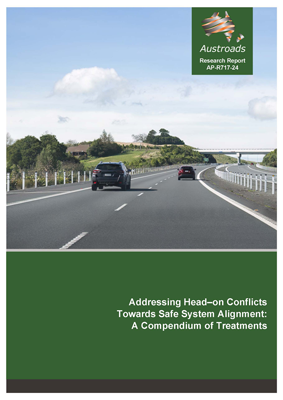Tuesday, 29 October 2024

Austroads has published a comprehensive report highlighting the importance of median barriers to mitigate the risk of head-on crashes on high-speed, two-lane roads in Australia and New Zealand.
Head-on collisions frequently result in significant impact forces, making them more likely to cause serious injuries than other types of vehicle crashes.
The report advocates for a Safe System approach, which aims to eliminate deaths and serious injuries on our roads by preventing exposure to harmful forces. Safe System principles underpin the design and operation of roads in Australia and New Zealand.
For head-on crashes, a Safe System is one where opposing traffic streams are segregated or where impact speeds are managed through vehicle safety features to a level where the energy exerted on the human body does not result in death or serious injury.
This study focused on engineering treatments that reduce the risk of head-on crashes in high-speed rural environments, by physically separating opposing traffic or reducing the likelihood of vehicles encroaching the opposing traffic lane.
The research suggests that a flexible safety barrier in a wide median is the most effective treatment for addressing head-on crashes on high-speed two-lane rural roads and the use of this treatment should be further encouraged. In the past, policies and guidance have allowed medians of a certain width to not have barriers. The preference is now to provide median barriers regardless of the median width on high-speed roads.
“The practice of using central barriers in narrow medians has been successfully embraced in parts of Australia and New Zealand, and more broadly in countries such as Sweden, Japan and Ireland,” Michael noted. “Their wider adoption in Australia and New Zealand is crucial for enhancing road safety and protecting lives.”
The report recommends a hierarchy of approaches to address head-on crashes. The optimum solution is to provide a median barrier, however, other treatments may be appropriate in certain circumstances depending on considerations including road function, space or resource constraints, and access requirements. These include the use of wide centre lines and audio tactile line markings.
“By implementing these recommendations, we can make significant strides towards our goal of creating a road system where serious injuries and fatalities from head-on crashes are virtually eliminated.”
Download Addressing head-on conflicts towards Safe System alignment: A Compendium of Treatments
Webinar
Join us for a webinar on Wednesday 30 October at 1 pm AEST with Dr Rod Troutbeck, Jade Hogan and Jamie Robertson to hear a discussion about a range of improvements.
No charge but registration is essential. Can’t make the live session? Register and we’ll send you a link to the recording.
